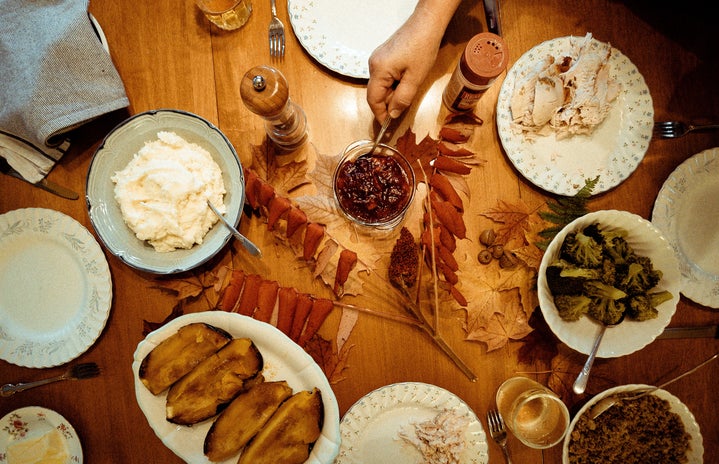The Menu serves up a deliciously dark and wicked six-course banquet of comedy, satire, and terror. A dinner that you’d rather not be invited to, is prepared meticulously by lead actor Ralph Fiennes and presented to a star-studded cast of diners including Anya Taylor-Joy, Nicholas Hoult, Rob Yang and John Leguizamo. Although The Menu has been marketed mainly as a horror film, director Mark Mylod creates a blend of genres and mixes edge-of-your-seat suspense with the black comedy and sly social commentary we recognize from his work on HBO hit-show Succession.
I’ve always admired the art and sophistication of the culinary world; the attention to detail, the passion of a master chef, the magic of turning ordinary, raw produce into something that is suddenly worth a thousand dollars. From the first five minutes onward, The Menu makes it abundantly clear that most of that magic comes from the sheer fact that I will never be able to afford that sort of meal. This is a film that rages against the system in which “high art” is created and hates anybody who takes part in it; the critics, the fanboys, the finance bros, the desensitized, unimaginably wealthy repeat customers, and even the cult-like worship that forms around the directors and filmmakers themselves.
Although I would normally find it hard to stomach any sort of chastising tone from an eat-the-rich themed film with a multi-million-dollar budget, when taken with a grain of salt I found The Menu pretty entertaining. Expecting filmmakers and actors who are rich themselves to create a full-on takedown of capitalism might be asking them to bite off a bit more than they can chew (I think we’re all better off leaving that to the many working-class indie filmmakers of the world). Rather than attempting a tone-deaf deep dive into class consciousness and wealth inequality, Mylod delivers a funny, biting critique of “bougie” culture which in fact does not only include the über-wealthy but also a growing section of the middle to upper middle class that will gladly commit white-collar crimes or end up a month behind on their student-loan payments to find out for themselves if money really does buy happiness.
As for the look of the film, The Menu is an exercise in simplicity. The movie begins with Tyler (Nicholas Hoult) and Margot Mills (Anya Taylor-Joy) traveling by boat to a private island for an exclusive dining experience at Hawthorne, a high-brow restaurant run by celebrity chef Julian Slowik (Ralph Fiennes), and we spend nearly the entire film within its sleek, grey stone walls. Although the location is limited, it is quite striking and the film uses this to its advantage with ominous title cards announcing each course of the meal over shots of still, dark waters and desolate beaches littered with driftwood; the color grading is generally dim and smoky and creates quite an unsettling atmosphere. These gloomy landscape shots contrast nicely with the presentation and plating of the actual food, my personal favorite aspect of the film. Some of chef Slowik’s dishes seem more like small, dollhouse-like dioramas of the island itself than actual meals, with laughably small pieces of fish and local plants scattered over rocks from the beach. Others are creepier than food should ever be, featuring tacos served in tortillas printed with sneaky photos of the guests themselves in compromising situations.
All in all, The Menu is as exquisite and intangible as its subject matter. As food porn, it works perfectly. As a thriller and work of social commentary, it is enjoyable albeit a bit cliché. The decision to create a surface-level display of the different kinds of gross materialists of the world is certainly comedic, and the violent, gory scenes scattered throughout were pleasantly shocking, but I can’t say I ever felt truly surprised or moved. To me, it was always rather obvious where the story would end and there were no major plot twists to boast of, but the eerie score and significantly creepy performance by Ralph Fiennes as the sinister and obsessed artist were enough to have my eyes glued to the screen without really bringing anything groundbreaking to the table. The social satire is just enough to make a viewer roll their eyes and scoff in annoyance and recognition, but not quite enough to really strike a chord; the characters are all hilariously recognizable stereotypes where a more impactful film might have focused more on character-building to give us a sense of the real cost of stepping on people’s toes to live in such over the top luxury and extravagance. In the end, the real saving grace of The Menu for me is the brilliant cast of actors who still manage to bring a lot of emotion and personality and even evoke sympathy where, at first glance, there can be none to a script that is, at best, on-the-nose.


